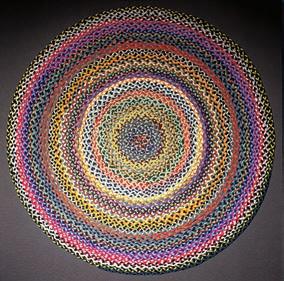
4 minute read
Ketamine: Psychedelic weirdness, medical treatment born in Detroit
DUSTIN WALSH
spreading rapidly. Nick Glynos, a doctoral candidate in molecular and integrative physiology at UM and vice president of the Student Association for Psychedelic Studies at the university, is researching the neurochemistry of rats who ingest the psychedelic N, N-Dimethyltryptamine, or DMT.
“ is whole psychedelic renaissance happened right when I was going to grad school,” Glynos said. “We’re facing the biggest mental health crisis right now and it’s coupled with massive interest in decriminalizing and the liberation of these substances and this whole psychedelic renaissance. ere’s a huge amount of potential with the therapeutic e ects of psychedelics.”
Both Ann Arbor and the city of Detroit have decriminalized the possession and use of psilocybin mushrooms. It is still, however, illegal to sell or buy the drugs on the street.
Glynos and his colleagues at the student group host doctors, professors and others with insight into the eld in hopes of propelling the discussion on psychedelic therapies forward.
Glynos, however, believes the warm feelings toward these drugs will wane as more and more studies come on line.
“It’s the wild west right now,” Glynos said. “I am deeply skeptical of the biases present right now. e people
In May last year, the U.S. Department of Health and Human Services said it is likely the FDA would approve not only psilocybin, but also 3,4-Methylenedioxymethamphetamine (MDMA, also known as ecstasy or molly) by the end of 2024. is has the support of President Joe Biden, who is expected to create an interagency task force to explore deployment of these psychedelics to treat mental health disorders.
“We are now clearly recognizing the importance of mental health and treatment far more than before,” Hosanagar said. “We simply don’t have the resources to care for everyone, so a lot of money is owing into this because there is a need. e small effects in early trials are so profound, there is a lot of interest to erase the stigma in hopes of developing enough evidence that these drugs work e ectively and can make an impact in the mental health community.”
Ray said she is interested in how psilocybin could improve her mental health, and Oxley plans to o er it and other psychedelics as soon as it is legal to do so.
“ e world would be a lot better place if people did more mushrooms,” she said.
Contact: dwalsh@crain.com; (313) 446-6042; @dustinpwalsh
Like so many things, ketamine’s true origins blossomed out of Detroit.
America in the 1950s was witnessing a health care renaissance after a decade prior where anyone with medical training was dispatched to Europe or the South Paci c. New procedures and technologies were being created — dialysis, pacemakers, u vaccines.
Detroit’s Parke, Davis & Co. (often called Parke-Davis and later acquired by P zer) sought to formulate better, more stable ways to improve post-surgical pain. Amphetamine abuse rose out of World War II and anesthesia drugs like cyclopropane, an expensive and explosive gas, were becoming outmoded.
Parke-Davis scientists created phencyclidine, or PCP, or sometimes called Angel Dust when used illicitly, later marketed as Sernyl. e drug was e ective at treating pain in animals and widely used by veterinarians, but the side e ects proved too harmful for widespread use and was discontinued in 1962.
But out of the Parke-Davis discovery, scientists elsewhere were able to create another synthetic drug using the same structural analog. In 1962, ketamine was rst synthesized.
Two years later, ketamine was being injected into volunteer prisoners and reportedly achieved similar pain reduction to PCP but with fewer side e ects. e patients also reported psychedelic e ects, like the sensation of oating in outer space and hallucinations.
But its widespread use didn’t last long as other, less psychedelic anesthesia drugs, such as Propofol (marketed as Diprivan), were created in the 1970s and made their way into operating rooms in the 1980s.
However, another group began nding uses for ketamine shortly after its invention — a group of counterculture scientists that peddled in pseudo-mysticism and human consciousness. at group consisted of psychologist and LSD advocate Timothy Leary, psychologist and yoga guru Ram Dass and neuroscientist and “psychonaut” John Lilly.

Lilly famously ran a highly controversial NASA-funded laboratory where he and his colleagues sought to communicate with dolphins out of a house they ooded to live in close proximity to their subjects.
Lilly also began using ketamine to treat his chronic migraines.
“When he was under the in uence of a small dose, Lilly said that he felt the migraine being pushed out of his body and, miraculously, he never had one again,” Vice reported in 2015.
Soon after he began shooting up ketamine, then transitioning to taking it via an IV while in a deprivation tank (which he also invented), as documented in his 1978 autobiography “ e Scientist.”
Lilly’s self-experimentation with “Special K” continued and the psychedelic properties led to vivid hallucinations that led him to believe he was being contacted by an alien group called the Earth Coincidence Control O ce, which was later documented in the Paddy Chayefsky book “Altered States” — later adapted into the 1980 Ken Russell movie of the same name. His drug-fueled dreams also inspired the early 1990s video game series “ECCO the Dolphin.” e U.S. Food and Drug Administration only approved ketamine for therapeutic use in March 2019. But ketamine clinics have been using it “o -label” to treat chronic depression and other mental illnesses for a decade and these clinics are increasingly cropping up across the country — all thanks to that early innovation led by Parke-Davis in Detroit and the potentially unhinged experimentation by “psychonauts” like Lilly.
Lilly’s ketamine experimentation, alongside that of his peers, led to the movement of exploring human consciousness and became the precursor to psychedelic-assisted therapy that’s on the rise today.
Contact: dwalsh@crain.com; (313) 446-6042; @dustinpwalsh









